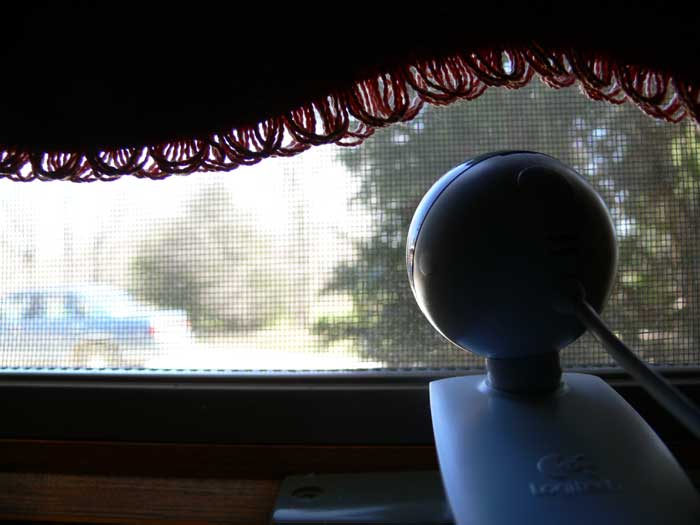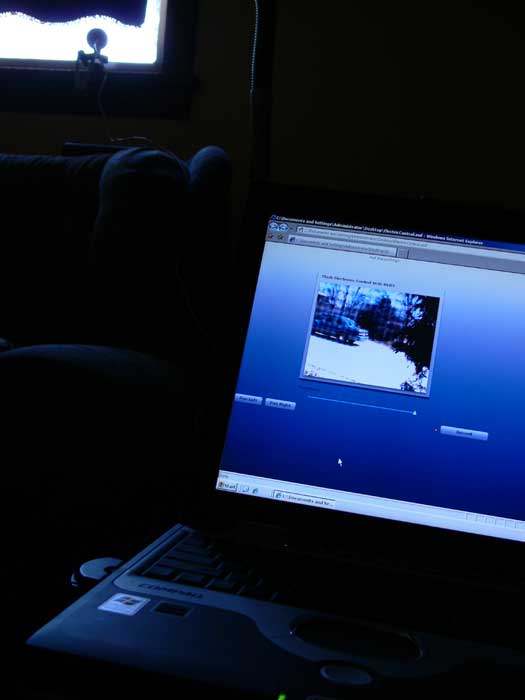
Flex and Red5 Surveillance System
Tue, 15 Apr 2008 13:20:10 EST
I was surprised how easy it is to use Flex(AS3) in comparison to AS2. Using Mtasc and Swfmill for hacking together AS2 applications has been completely replaced by Adobe's MXML. Adobe also fixed a lot of the complication surrounding event listeners and having to use external 3rd party classes like delegate for AS2. Flex is definitely not hacky like AS2 was and manipulating components with MXML seems a lot more similar to using controls in visual basic and ASP in visual studio.
Anyway, on to the details of the surveillance system. In a traditional surveillance system, the camera is always recording which wastes tape. I would also imagine that the tapes wear out fast and are expensive to archive and physically store. I built my application so that it will only record video streams once a certain level of motion is detected. The motion threshold is easily adjustable with a horizontal slider control. Basically you connect to a red5 server and once the camera detects enough motion it makes a stream to red5 and red5 then records 10 seconds of video. In my test setup I use a laptop with the swf client and webcam which is connected wirelessly to a local router. I also have the same machine connected wirelessly to the router. In this instance, it really wouldn't matter if someone smashed your security camera because the video stream would have already been sent remotely to wherever the Red5 video server is running. Other advantages would be that you could have a 3rd party manage and archive the video streams remotely for you and that you could implement this into your existing businesses wireless network.
While testing yesterday, I had this setup running for about six hours. It didn't capture anything interesting, but it did get a video of my father returning from work like it is supposed to.
The current disadvantage to this system is that it needs a computer of some sort tethered to the camera you want to use for monitoring. In any case, I am currently looking for a way to avoid this in my other robotic experiments and am confident I will be able to find a standards compliant solution. The 802.11 self contained Airborne modules from Quatech look promising at the moment. My next step on this solution will be to include the servo pictured in my demonstration of flash electronic control in order to allow the camera to autonomously pan as it senses motion.

Comments

Sorry we posted the last message twice this computer screwed up.

Cool website, are you just gonna stand there or help me find out who killed Josef?? Sorry i'm a big moonlight fan and tend to quote the characters, i am also a big hippie so the best way to describe your website is to say it is RADICAL man!!!!! I swear that this is not me brother it's brittany again.Just joking man, rock on!!!!

Cool website, are you just gonna stand there or help me find out who killed Josef?? Sorry i'm a big moonlight fan and tend to quote the characters, i am also a big hippie so the best way to describe your website is to say it is RADICAL man!!!!! I swear that this is not me brother it's brittany again.Just joking man, rock on!!!!

Have fun at school. I had a tv show in high school that had the same name as this site. Thanks for the comments

Cool website, where did you get the idea for the name????????????????????? Your sister???? (this is my friend talking and were at school)This is from morgan and brittany on my soccer team. You know, the really tall one? COOL I'M TALL!!!!!

HEY Bro just checking up on you. How's the website going? It looks good so keep up the good work. TTY@home.Love,your sister Morgan.
Comments are currently disabled.


